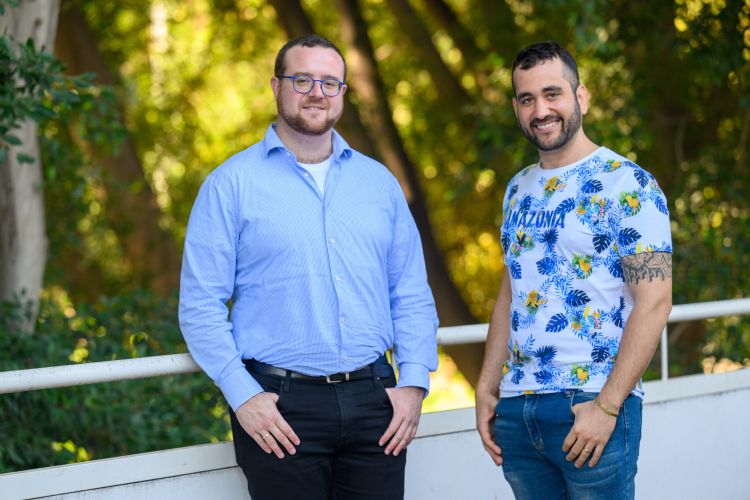Weizmann duo from different disciplines connected by the power of AI

Amir Kleiner, PhD student in the Department of Molecular Chemistry and Materials, spends his research working with vast amounts of data that are complicated to compute. He shares, “I was first motivated to come to the AI hub to develop tools to make the data-creation process less time and resource-expensive, thus allowing us to investigate more interesting systems.”
After his internship at the hub, Amir had an inner calling, in which he felt he wanted to contribute to peer scientists on campus to bring their scientific work to the next level with AI and he was accepted as a tutor at the AI hub.
This is how Amir met Segev.
Segev Naveh Tassa, PhD Student in the Department of Structural Biology, noticed that his field of research has been rapidly evolving in recent years. He was confident that AI would provide him with the needed tools to solve research problems he faced.
Even though Segev came from a different scientific field with separate research, Amir was able to mentor Segev in how to deal with his research problem from a data-driven approach. Amir shares, “My experience in the hub introduced me to many very different research problems from multiple disciplines, most of which are far from my field of expertise. Regardless, the students require my help in applying AI tools to solve these problems, thus forcing me to develop the capability to try and grasp the key features of their problems and reshape them into formulations that are understandable to data scientists and to the AI models.”
The mentorship which Segev received went well beyond the lab. With his new skills in AI, he was able to truly take his work to the next level and even present it at a renowned conference in Europe.
Segev proudly shared, ‘I was able to solve a key challenge in my Alzheimer’s-related research on tau–microtubule dynamics — identifying distinct dynamic states that were previously hidden in the data. Using AI tools I developed through the Hub, I was able to classify and understand these transitions, which had eluded me before.”
Today, Amir and Segev are working on a joint research paper that presents a novel approach. Segev explains, “We intentionally overfit an AI model to our simulation data in order to extract meaningful trends in protein movement. It’s a creative use of overfitting, repurposing it as a feature rather than a bug, and it’s opening up some exciting insights.”
This story reflects the Weizmann Institute’s multidisciplinary spirit, where AI acts as a bridge between scientific fields — empowering researchers to follow their curiosity and make discoveries in uncharted territories
Photograph from the Weizmann photography unit